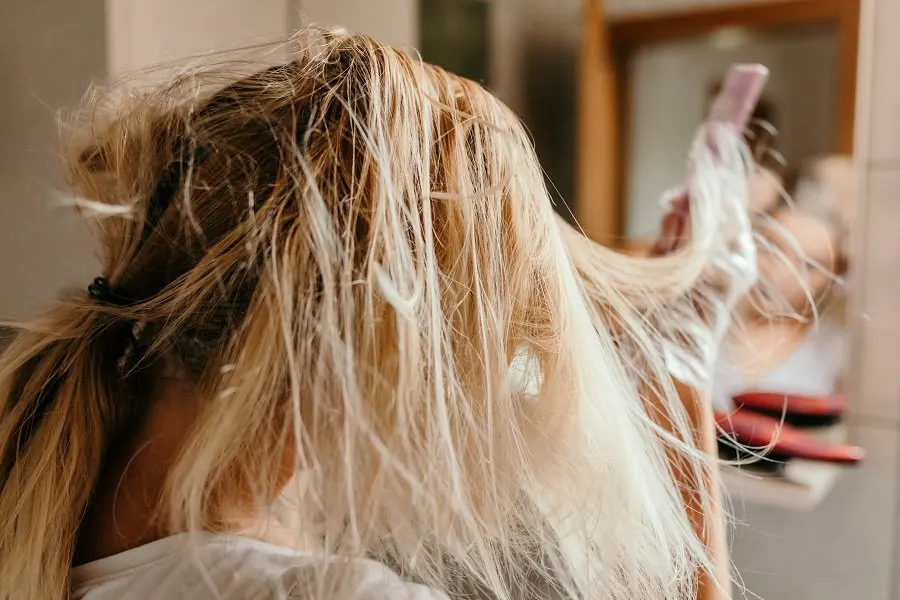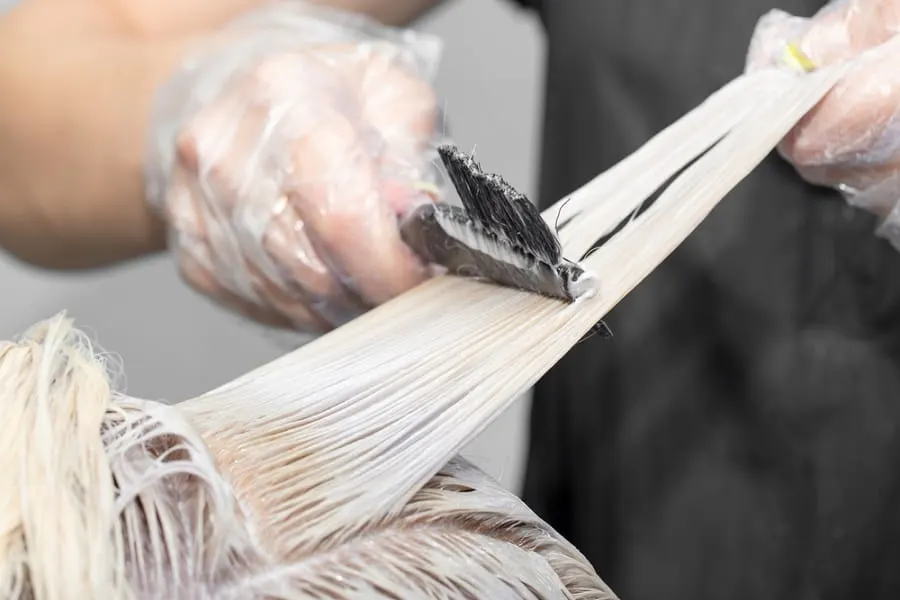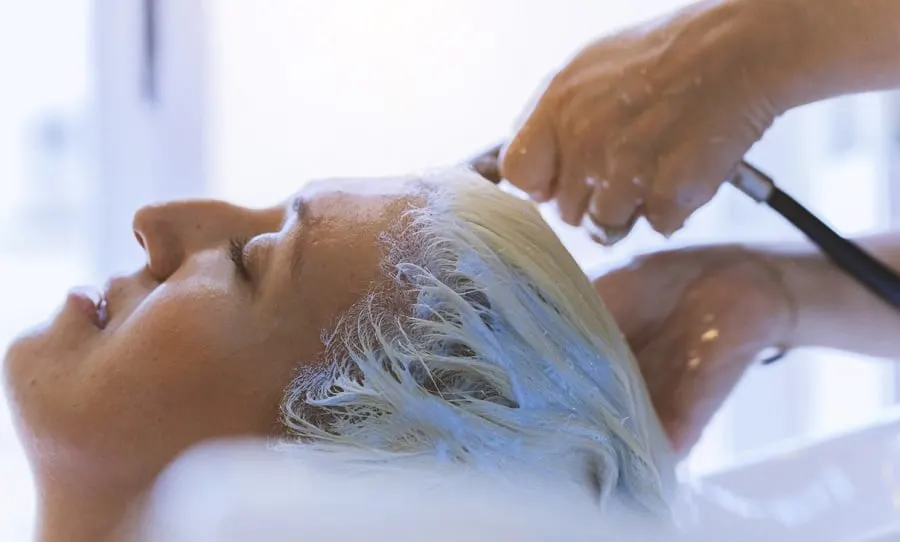You have bleached hair, and at some point either while the bleach is on or when you have taken the bleach off you have realized that the hair is gummy or super-stretchy. This is not good at all and you’re starting to worry!
First things first if this is happening while bleach is still on the hair, rinse immediately with cool water!
What Should I Do If My Hair Is Gummy After Bleaching?

Unfortunately, there is only one real way out. The majority of the “gummy” hair needs to be trimmed off or it will eventually break off causing even more damage. The first thing to do is to get a high-quality salon haircut and treatment to repair your hair.
When your hair is gummy, it is also very hard to dry, can be extremely frizzy, untameable and constantly breaking, it can actually snap off as you are drying or brushing it.
So, the best bet is to have a reasonable cut to trim the majority of the gummy hair off.
Why Does Hair Become Gummy After Bleaching?
While it may seem alarming if it’s never happened to you, it’s common for hair to become gummy when you bleach it.
This phenomenon most commonly happens among individuals with highly porous hair, meaning you have the type of hair that easily absorbs oils, water, and other products.
Individuals with a high hair porosity tend to experience lifted cuticles, which can cause hair to become gummy, brittle, or dry after you bleach it.
Things to Know About Gummy Hair
Suitable Bleach Level for Hair

When you are lightening hair with bleach, slowly (or quickly depending on the percentage of peroxide you are using) the bleach is actually consuming the color pigment molecules.
The darker the hair is, the more color pigment molecules the bleach needs to consume to get to the desired underlying reflection, this enables you to tone on the correct level and have a great result.
In a salon, it is a hairdresser’s job to decide the health of the hair vs the desired hair color, and what bleach level to mix to achieve as much lift as possible, and ensure that the health of the hair is not compromised beyond return.
Gellified Hair

When the hair becomes gummy, the health of the hair has been compromised to such a state as it cannot ever be returned to a healthy state.
The terminology used for hair in this state is called “Gellified”. It means becoming a “gel-like state”. And this is exactly what happens to hair that has been over-processed with bleach.
This can happen when-
- The peroxide level is too high for the hair you are lightening
- When the bleach has consumed all the color pigments and over-processed on the blonde.
Gummy Hair Care

Gummy hair can actually occur after bleaching, chemical straightening, and perming. Regardless of how it occurs, the outcome is the same.
Gellified hair requires a lot of ongoing care, not only the initial treatment and trim but also using a good quality salon shampoo, conditioner, and treatments, limited heat treatments, limiting environmental damage (heat and dry) and only using tepid water to shampoo and conditioner as to not open cuticles and incur further damage.
The good news is, at this point of going through this, you are absolutely beside yourself. By following a good healthy hair routine, minimal heat, salon products, and not overcoloring, you’ll be able to say goodbye to gummy hair and your lovely locks will grow back!
What To Use To Repair Hair After Bleaching?

If your hair becomes gummy after bleaching, you’ll want to take steps to rebuild your hair’s cuticle. Some products that can help you seal your hair’s cuticle, restoring its natural shine or glossy appearance, include:
- Oils: Some ideal ones include coconut, almond, olive, or argan oils. Remember, it takes a small amount to revive your hair’s health and appearance.
- Leave-in conditioner: A keratin-based type of leave-in conditioner, whether a spray-on or a thick, creamy one, can help repair your hair’s cuticle, improving its appearance.
- Rice water: You can boil rice, strain it, and preserve the nutrient-rich water left behind. You can then put it in a container and wash your hair with it daily until your hair’s healthy appearance is restored.
FAQs
Here are some of the most common questions related to gummy hair after bleaching.
It’s definitely possible to repair your gummy hair after bleaching. One of the best approaches you can take to repair your stringy, bleach-damaged hair is to first steer clear of certain activities that may further damage your mane, including:
● Excessively shampooing your hair
● Brushing your hair when dry
● Exposing your bleached hair to chlorine
● Subjecting your hair to heat styling
While a trim of about two or three inches certainly won’t cause your hair any harm if it appears gummy from you bleaching it, it’s definitely not something you must do.
If you are on the fence about whether to do a trim, then know that a haircut will eliminate the appearance of split ends, thus decreasing frizziness.
Doing away with those damaged strands of hair will restore strands of hair that are less likely to break off and are more manageable.
Most shampoos on the market strip your hair follicle of vital natural oils. Reducing how many times a week you wash your hair will give your follicle and locks some time to heal.
A good rule of thumb is to only use shampoo once or twice weekly with lukewarm water until your gummy hair situation improves.
It’s not wise to attempt to color your bleached hair. Doing so only exposes your follicles and hair to more chemical processing which can worsen its damage.
Also, color-treating bleached hair doesn’t look as good as you might expect due to the combination of chemicals you’ve exposed your stands to.
